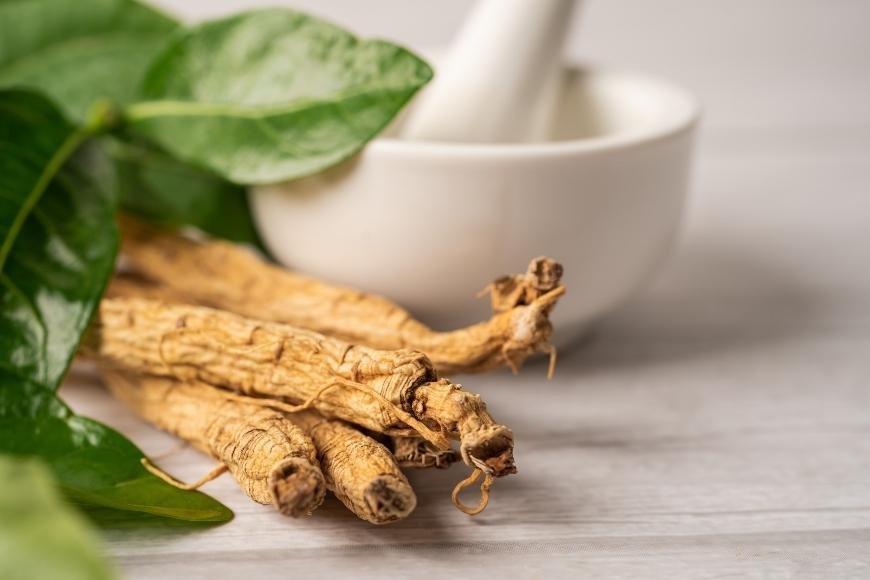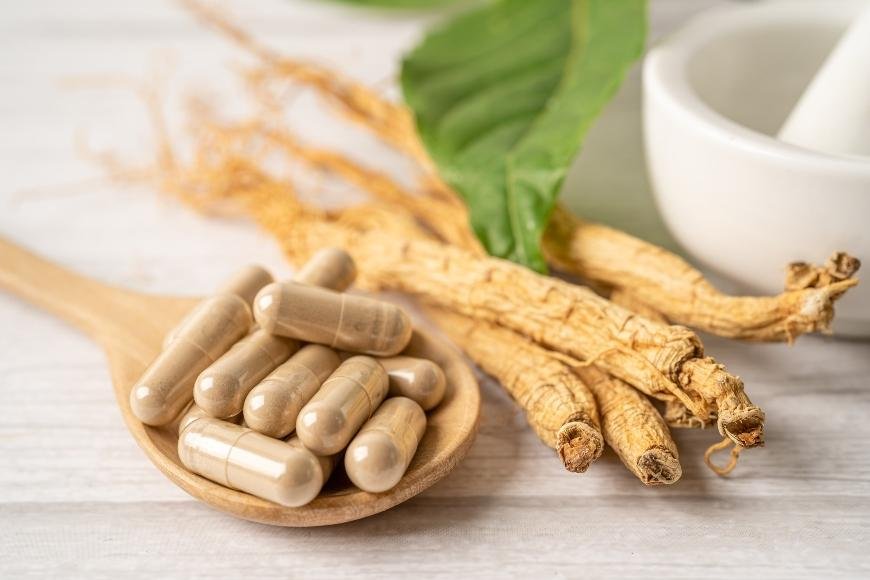How to Use Ginseng?
Learn how to use Ginseng with our beginner's guide, covering types, preparation, dosage, side effects and safety tips for this herbal supplement.

If you're curious about the use of Ginseng, this guide is here to help. This powerful herbal supplement has been used for centuries in traditional Chinese medicine and is now gaining popularity among young adults who recreationally grow and take drugs.
In this comprehensive guide, we'll explore the various types of Ginseng, such as Panax ginseng, American ginseng, Asian ginseng, Siberian ginseng, Korean red ginseng and Korean ginseng - all with their own unique therapeutic benefits. We will also discuss different preparation methods that can help maximize its benefits.
Furthermore, we'll provide dosage guidelines to ensure safe consumption while still reaping its therapeutic effects. Finally, we'll touch on potential side effects and safety considerations when using this potent herb.
By the end of this blog post on how to use Ginseng effectively and responsibly, you will be well-equipped with knowledge to make informed decisions about incorporating it into your lifestyle.
Table of Contents:
- Overview of Ginseng
- Types of Ginseng
- Preparation Methods
- Dosage Guidelines
- Frequently Asked Questions How to Use Ginseng?
- Conclusion
1. Overview of Ginseng
Ginseng, a highly sought-after plant with various medicinal properties, has been used for thousands of years in traditional Chinese medicine and other ancient healing practices. This adaptogenic herb is known to help the body adapt to stress and improve overall well-being. In this section, we will delve into the history and uses of ginseng that have made it so popular among young adults looking for natural ways to enhance their mental and physical performance.
2. Types of Ginseng
Ginseng is a popular herb with a long history of use in traditional medicine, and it comes in various types that offer different benefits. In this section, we'll explore the main types of ginseng you may encounter on your journey to better health and well-being.
American Ginseng (Panax quinquefolius)
American ginseng, native to North America, is known for its cooling properties and ability to help reduce stress levels. It's commonly used as an adaptogen, meaning it helps the body adapt to various stressors while promoting overall balance.
Asian Ginseng (Panax ginseng)
For centuries, Asian ginseng (Panax ginseng), also known as Korean or Chinese ginseng, has been used in traditional Asian medicine to promote balance and adaptability. This type of ginseng is believed to have warming properties and can boost energy levels, improve cognitive function, and support immune system health.
Siberian Ginseng (Eleutherococcus senticosus)
Although not technically a true "ginsenoside-containing" variety like American or Asian varieties, Siberian ginseng still offers numerous health benefits. Known for its adaptogenic effects similar to those provided by American and Asian varieties, Siberian g-herb supports physical endurance performance improvement when taken regularly over time.
Fresh vs Dried Roots
When it comes to consuming ginseng, you have the option of using either fresh or dried roots. Fresh ginseng is typically milder in taste and can be eaten raw or cooked in various dishes. Dried ginseng, on the other hand, has a more concentrated flavor and is often used for making teas, tinctures, or capsules.
Red vs White Ginseng
Red and white ginseng are both derived from Panax ginseng but undergo different processing methods that result in distinct properties. Red g-herb is made by steaming fresh roots before drying them out which gives its characteristic red coloration; this process also increases levels of certain active compounds called "gisenosides." Conversely w-ginso undergoes simple air-drying without any additional treatment resulting less potent effects compared those found within r-ginso counterpart.
By understanding the differences between red and white ginseng, you can choose which variety best suits your needs and preferences. Whether you're looking for stress relief with American herbaceous plant extract or seeking energy boost through Asian root consumption - there's something everyone when exploring world renowned medicinal herbs like these.
3. Preparation Methods

Ginseng is an herb with a variety of uses, each providing its own distinct advantages and results. Exploring three common approaches to consuming ginseng, such as boiling, steeping and decoctioning, is the focus of this section.
Boiling
Boiling ginseng is a straightforward way to extract its active compounds and soften it for consumption. This method extracts the active compounds from the root while also softening it for easier consumption. Here's how you can prepare boiled ginseng:
- Clean your fresh or dried ginseng root thoroughly under running water.
- Slice the root into thin pieces to maximize surface area and enhance extraction.
- Add about one liter of water to a pot along with your sliced ginseng root.
- Bring the mixture to a boil over medium heat before reducing it to low heat.
- Simmer gently for approximately two hours until most of the liquid has evaporated and reduced by half..
- Carefully strain out any remaining solids using cheesecloth or fine mesh strainer.
- The resulting liquid should be thickened like syrup; allow it cool down before consuming.
4. Dosage Guidelines
Discovering the ideal amount of ginseng to consume is critical for obtaining its advantages without any undesired consequences. The recommended intake could be different depending on variables such as age, mass and personal sensitivity to the herb. In this section, we'll provide some general guidelines on how much ginseng you should take based on these factors.
A. Age and Weight Considerations
Individuals may need different amounts of ginseng depending on age and size. Generally speaking, younger adults with lower body weights may require a smaller dose than older adults or those with higher body weights.
- Young Adults (20-30 years): Start with a daily dose of 200-400 mg of standardized extract or 1-2 grams of dried root powder.
- Middle-Aged Adults (31-50 years): A daily dose of 300-600 mg of standardized extract or 1.5-3 grams of dried root powder is typically sufficient.
- Elderly Individuals (51+ years): It's advisable to consult a healthcare professional before starting ginseng supplementation at this age range; however, typical doses fall within the range of middle-aged adults if approved by your doctor.
B. Type and Formulation Differences
Different types and formulations of ginseng can also impact the optimal dosage required for desired effects:
- Panax Ginseng:This variety is commonly found in Asian countries like Korea and China; dosages generally range from about 200-400 mg of standardized extract per day.
- American Ginseng:Native to North America, this type typically requires a slightly higher daily dose of around 500-1000 mg of standardized extract.
- Siberian Ginseng (Eleutherococcus senticosus):This is not a true ginseng but shares similar properties; dosages usually range from 300-1200 mg daily for the root or 100-200 mg for the leaf extract.
- Tinctures and Teas: If you prefer consuming ginseng as a tincture or tea, follow the manufacturer's instructions on dosage. Typically, 1 ml (20 drops) of tincture three times daily or one cup of tea made with 1 gram dried root powder is recommended.
C. Duration and Cycling
Ginsenosides in ginseng can build up in your system over time; hence it's essential to cycle its use to avoid potential side effects. A common practice is taking ginseng for two weeks followed by a one-week break before resuming supplementation.
Individual needs may differ, depending on factors such as health conditions and personal sensitivities; therefore, it is important to consult a healthcare provider before starting any new supplement regimen. Before beginning any supplement program, particularly if you are pregnant, nursing, or taking medications, be sure to speak with your healthcare provider.
Frequently Asked Questions How to Use Ginseng?

What is the best way to use ginseng?
The most effective way to use ginseng is by consuming it in the form of tea, capsules, or extracts. You can also add powdered ginseng root to your food or smoothies. Make sure you follow the recommended dosage guidelines and consult a healthcare professional if needed.
Why can't you take ginseng everyday?
Ginseng should not be taken every day because overconsumption may lead to side effects such as insomnia, headaches, and digestive issues. It's essential to cycle its usage with breaks in between for optimal benefits and safety.
How much ginseng can I take per day?
The daily dosage of ginseng varies depending on factors like age, health condition, and type of product used. Generally speaking, 200-400 mg of standardized extract or 1-2 grams of dried root powder per day are considered safe for healthy adults.
What should you not use ginseng with?
Avoid using ginseng alongside stimulants (e.g., caffeine), blood thinners (e.g., warfarin), antidepressants (e.g., MAOIs), diabetes medications (e.g., insulin) and other herbs that affect blood pressure without consulting a healthcare professional first due to potential interactions.
When should ginseng not be used?
Ginseng should not be used by pregnant or breastfeeding women, individuals with high blood pressure, heart conditions, bleeding disorders, hormone-sensitive cancers or those undergoing surgery. Consult a healthcare professional before using ginseng if you have any medical condition or are taking medications.
Conclusion
Ginseng can be a potent plant with many potential advantages, yet it should be utilized with care and caution. The best way to employ ginseng will vary, taking into account individual factors such as age, health status and body weight in addition to the desired outcome. It's important to understand the different preparation methods available in order to choose one that works for you while following dosage guidelines and taking into account any safety considerations before using ginseng.




































































































































